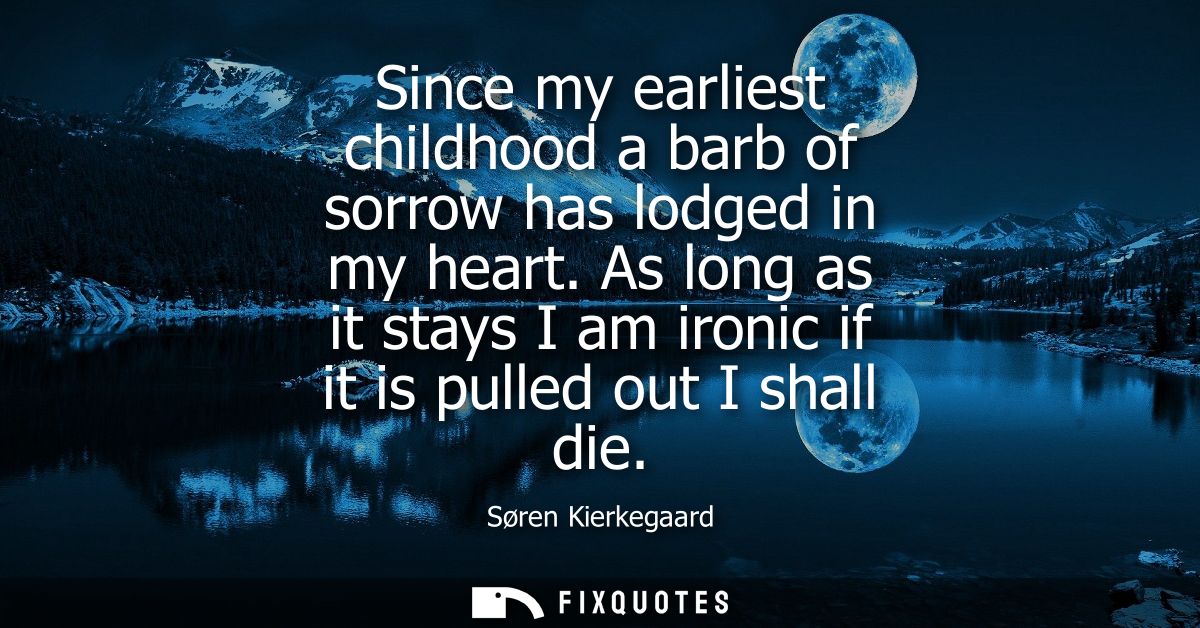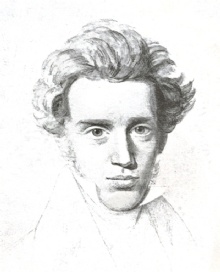"Since my earliest childhood a barb of sorrow has lodged in my heart. As long as it stays I am ironic if it is pulled out I shall die"
About this Quote
Søren Kierkegaard’s reflection on the “barb of sorrow lodged in my heart” expresses an intimate, existential reality that resonates throughout his body of work. At its core, this statement acknowledges a persistent, formative sense of melancholy that has accompanied him since childhood. The metaphor of the “barb” conjures the image of a deep-seated pain, not a fleeting sadness, but something stuck so fundamentally within the self that it has influenced his outlook on life and his way of being.
Rather than merely lamenting this sorrow, Kierkegaard describes it as an integral aspect of his identity. The pain is paradoxically both a wound and a source of life: as long as the barb remains, he maintains a stance of irony, a philosophical detachment or protective armor in facing the world. Irony here is not simple sarcasm or dismissiveness, but a complex mode of being, a way of interacting with existence that allows for both distance and insight. It is almost as if the sorrow makes possible a deeper engagement with the profound questions of life, faith, and individuality. The pain is intertwined with, and perhaps even generative of, his philosophical creativity and perceptiveness.
Yet, there is a kind of dread or anxiety over what would happen if the sorrow were removed. Kierkegaard claims that if the barb were to be pulled out, it would mean his death. The sorrow, in spite of, or because of, its agony, is necessary for his survival; without it, he would face a kind of existential or perhaps spiritual death, the loss of that inner tension which propels reflection and self-examination. Through this lens, suffering is not simply to be escaped but recognized as an inextricable and even vital contributor to identity, insight, and perhaps the possibility of authentic existence. Kierkegaard reveals how suffering is both a curse and a creative, life-sustaining force.
More details
About the Author

